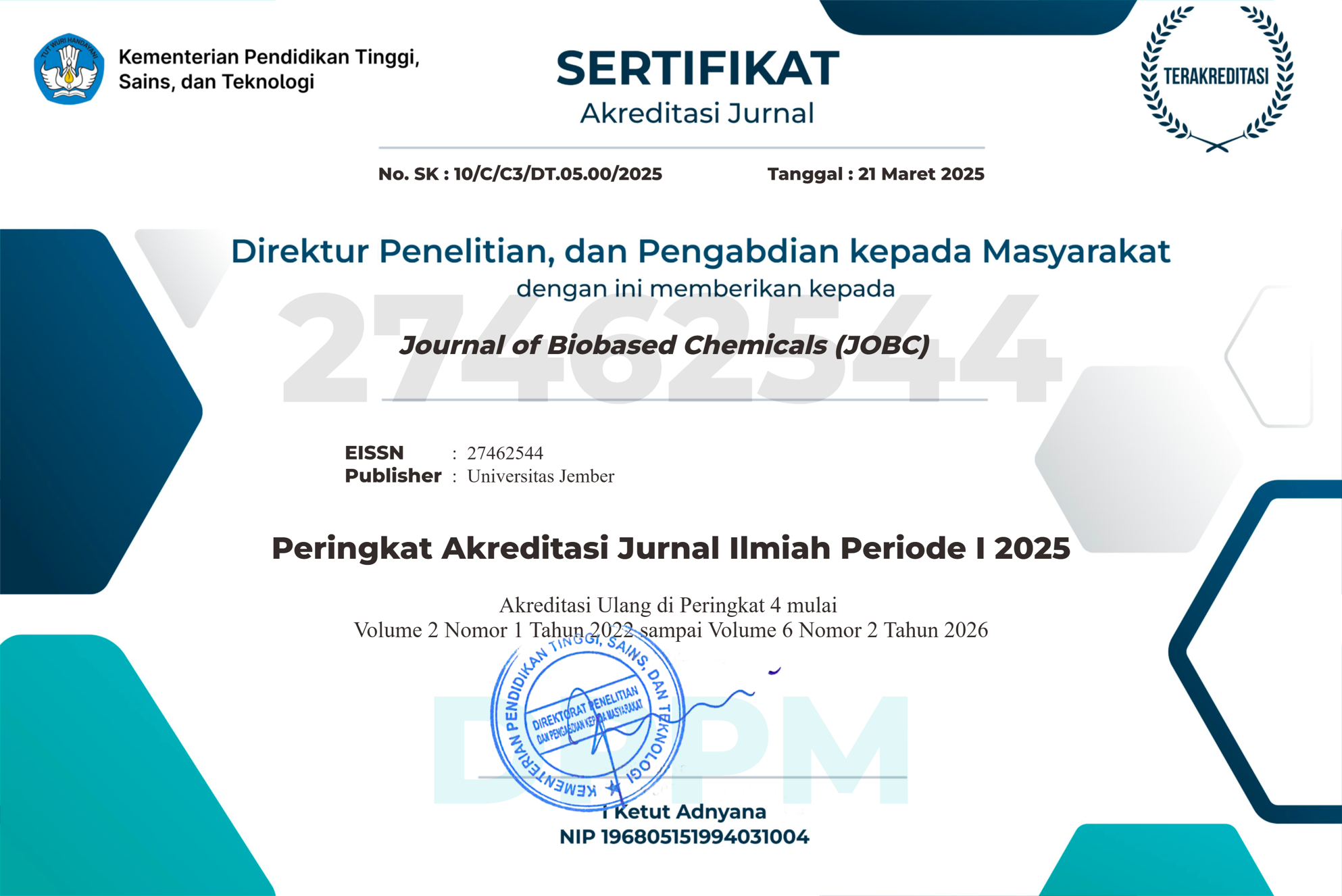Effect of Time, pH, and Yeast Concentration on Bioethanol Levels in the Ulva sp. Fermentation Process
DOI:
https://doi.org/10.19184/jobc.v2i2.269Keywords:
Bioethanol, fermentation, yeast, Ulva sp.Abstract
Bioethanol is a form of renewable energy that is used to reduce dependence on the use of fossil fuels which cause various negative impacts on the environment. Ulva sp. contains high carbohydrates so it has the potential as a raw material for bioethanol production. This study aims to determine the optimum conditions of the fermentation process with the variables used time, pH, and yeast concentration. This study used the results of hydrolysis of Ulva sp. with optimum operating conditions of 0.1 N HCl concentration, 80 mesh particle size, and 450 watt microwave power. Measurement of bioethanol levels was carried out using an alcoholmeter. The results showed that the optimal conditions for fermentation were 7 days of fermentation, pH 5.5, and yeast concentration of 1.5% which resulted in a bioethanol content of 7.55%.








